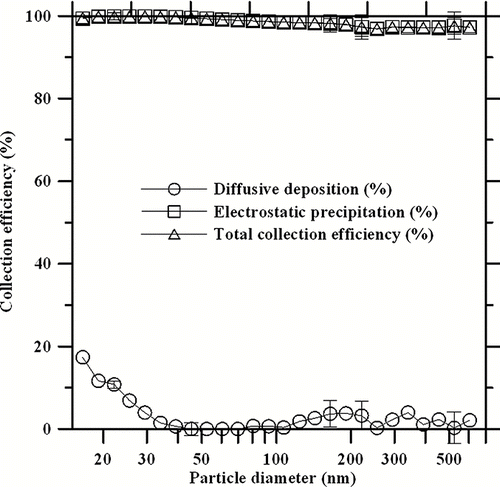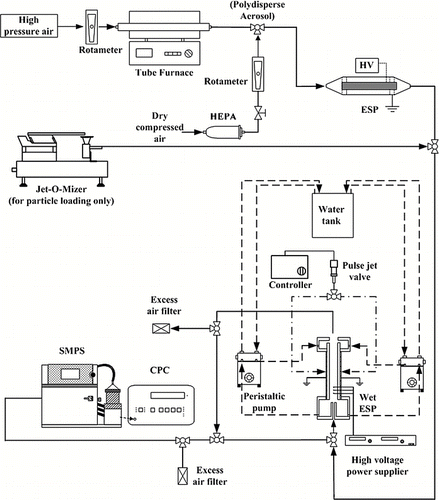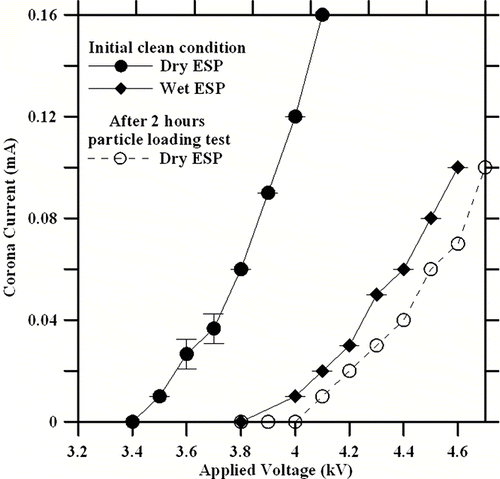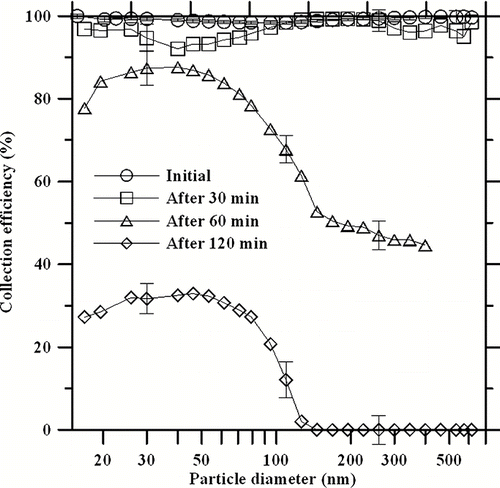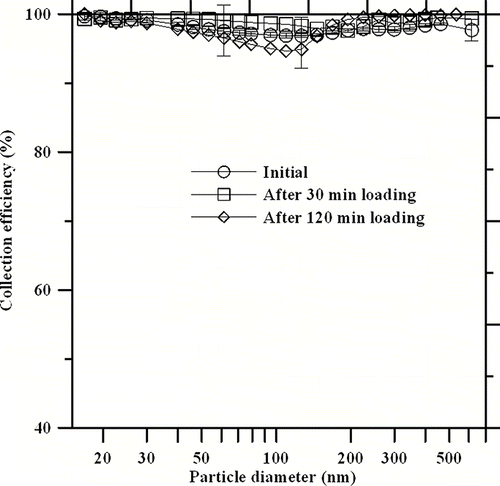Figures & data
FIG. 1 Schematic diagram of the parallel-plate wet ESP. Plexiglass plates (M), enter piece (C), frosted glass plate (FG), sand-blasted copper plate (G), overflowing reservoir (OR), collecting reservoir (CR), golden wire (GW), liquid inlet (LI), liquid outlet (LO), aerosol inlet (AI), aerosol outlet (AO), pulse jet valve (PJ), air hole (AH).
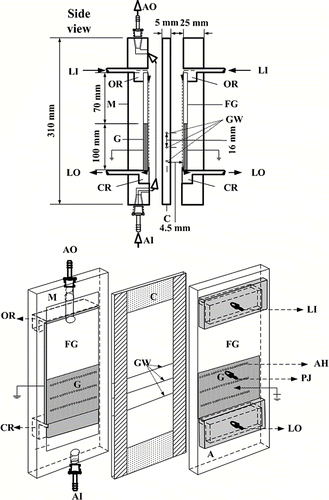
TABLE 1 The characteristics of the test particles
FIG. 4 Collection efficiency of the present wet ESP for corn oil particles at the aerosol flow rate 5 and 10 L/min and the applied voltage of 4.3 kV. Each test was repeated 6 times.
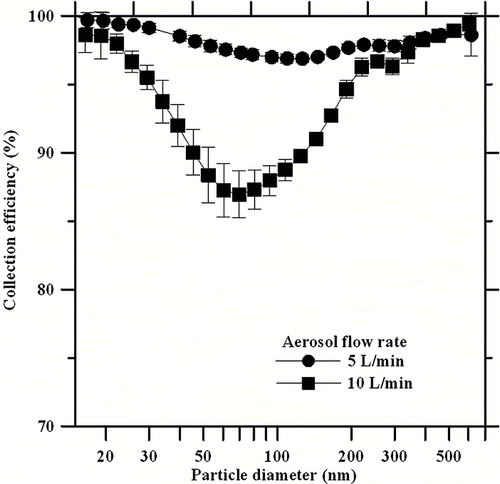
FIG. 5 Collection efficiency of the present wet ESP for corn oil particles under different applied voltages. The aerosol flow rate is fixed at 5 L/min. Each test was repeated 6 times.

FIG. 6 Electrostatic precipitation and diffusive deposition efficiencies of the polydisperse corn oil particles in the present wet ESP when the aerosol flow rate and the applied voltage are 5 L/min and 4.3 kV, respectively. Each test was repeated 6 times.
